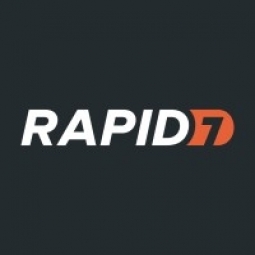技术
- 平台即服务 (PaaS) - 应用开发平台
- 传感器 - 液位传感器
适用行业
- 水泥
- 国家安全与国防
用例
- 网络安全
- 篡改检测
服务
- 网络安全服务
- 系统集成
关于客户
Rackspace Technology 是一家领先的端到端多云技术服务公司。他们提供跨所有主要技术平台设计、构建和运营客户云环境的服务,无论技术堆栈或部署模型如何。 Rackspace 在云之旅的每个阶段都与客户合作,使他们能够实现应用程序现代化、构建新产品并采用创新技术。安全性是 Rackspace 的首要任务,他们致力于确保客户的数据像自己的数据一样安全并受到保护。
挑战
Rackspace Technology 是一家领先的端到端多云技术服务公司,在确保客户数据安全方面面临着重大挑战。作为一家跨所有主要技术平台设计、构建和运营云环境的公司,Rackspace 向客户灌输信任和信心至关重要。面临的挑战是确保当客户将其数据放在 Rackspace 平台上或选择与 Rackspace 交互时,他们的数据将像 Rackspace 自己的数据一样安全并受到保护。该公司需要一个强大而可靠的解决方案来管理漏洞和威胁,并确保最高级别的数据安全。
解决方案
为了应对这一挑战,Rackspace 求助于安全可视性、分析和自动化解决方案的领先提供商 Rapid7。 Rackspace 实施了一套 Rapid7 产品,包括 InsightVM、Metasploit 和 InsightAppSec。这些工具使 Rackspace 能够为内部运营和客户安全运营中心进行全面的漏洞评估、红队和威胁情报。 Rapid7 解决方案的采用标志着 Rackspace 的进化之旅,使他们能够以新的方式量化漏洞、更快地报告并更快地修复。 Rapid7 平台受到了团队的好评,他们赞赏其灵活性和提供的可能性。 Rapid7 的两个关键区别在于其高水平的 API 集成和自动化以及全面的支持。
运营影响
数量效益

Case Study missing?
Start adding your own!
Register with your work email and create a new case study profile for your business.
相关案例.

Case Study
System 800xA at Indian Cement Plants
Chettinad Cement recognized that further efficiencies could be achieved in its cement manufacturing process. It looked to investing in comprehensive operational and control technologies to manage and derive productivity and energy efficiency gains from the assets on Line 2, their second plant in India.

Case Study
Data Capture for Afghanistan Forces
Electronic equipments on the field of Afghanistan provided information on the status of the vehicle and to identify potential threats surrounding it to the British Force. The monitoring and interpretation of this data requires robust and sophisticated digitization for data capture and communication.

Case Study
Digital Transformation of Atlanta Grout & Tile: An IoT Case Study
Atlanta Grout & Tile, a Tile, Stone & Grout restoration company based in Woodstock, Georgia, was facing challenges with its traditional business model. Despite steady growth over the years, the company was falling behind the web revolution and missing out on the opportunity to tap into a new consumer base. They were using independent software from different vendors for each of their department information and workforce management. This resulted in a lot of manual work on excel and the need to export/import data between different systems. This not only increased overhead costs but also slowed down their response to clients. The company also had to prepare numerous reports manually and lacked access to customer trends for effective business decision-making.
Case Study
Enhancing Security and Compliance in Remitly's Global Money Transfer Service with Fastly
Remitly, an online remittance service, was faced with the challenge of securing its proprietary global transfer network. The company needed a security solution that could meet PCI requirements and protect customers' sensitive transactions through its mobile application. The solution had to be capable of defending against new and emerging attack types without impacting performance. Remitly also had to deal with irregular traffic patterns, such as a sudden spike in account transfers from a small network segment on the Pacific coastline of South America. The company needed to determine in real time whether such traffic indicated an attack or valid requests. A traditional web application firewall (WAF) would not be able to distinguish this traffic, potentially leading to customer frustration if the IP was blacklisted.

Case Study
Major Aerospace Company Automates Asset Management
The O&M division of an aerospace and global security company was using spreadsheets to manually track more than 3,000 assets assigned to students and staff. Maintaining audit trails for this high volume of equipment became increasingly time-consuming and challenging. The chore involved knowing precisely what equipment was on hand, what had been issued, its location and the name of the custodial owner of each item. Every aspect of this task was carried owner of each item. Every aspect of this task was carried out by individuals with spreadsheets. Manually documenting the full lifecycle of each asset added to the burden. This included tracking maintenance requirements and records, incidents and damages, repairs, calibrations, depreciation, and end-of-life data.







